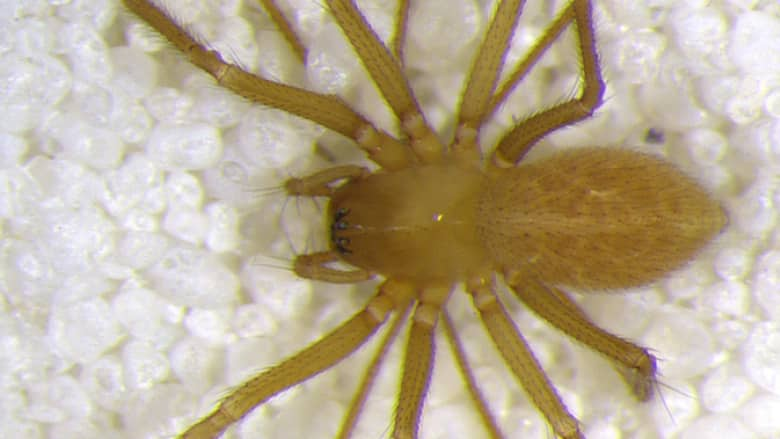
Scientists have discovered an itsy-bitsy species of spider that is known to live in just one cave in the world.
Sheet weavers, about two millimetres in size, are so called because they spin webs that are flat and tightly woven to the point they can be nearly opaque.
Marc Milne, assistant professor in the department of biology at the University of Indianapolis, collected the tiny critters from Stygeon River Cave, in southern Indiana in October 2016.
“I didn’t know what the spider was at first,” Milne, originally from Halifax, said in a news release about the find. “I just thought it was odd that so many were living within this dark cave with no other spider species around.”
Milne said he found the horizontal webs characteristic of this family of spider (Linyphiidae) woven between boulders in the largest chamber of the wet, muddy cave, which is located in a protected state park. The flat webs help the spiders catch prey that hops along the ground, such as springtails — arthropods that spring up when alarmed.
Milne set about identifying the specimens.
Besides being the only type of spider in a confined area, another clue was that the males and females looked similar; sometimes a mating pair was found on the same web.
They resembled Islandiana cavealis, which are found in Kentucky, immediately to the south of Indiana. But while that species has nearly nonexistent eyes, this one had well formed ones.
“We think this is the only place they live,” Milne said.
He named the new species after fellow scientist Dr. Julian Lewis, who’d first shown the spider to him.
Islandiana lewisi is the 15th species in its genus and the fifth one to dwell in cave habitats — it’s been over 30 years since a new species was added to this group.
Milne said this find counters the familiar notion that new organisms are found only in exotic locations.
“I think this discovery is important to show students and the general public that we don’t know what’s in our backyards, what’s in our forests.”
Milne said research like his helps our understanding of how ecosystems work and how our environments function. And the type of data he collects is relied upon for conservation efforts.
“To have any effective conservation policy, the No. 1 thing you need is to know what organisms are in that environment,” he said. He hopes this kind of knowledge will allow governments to develop better protections for this and other forests.
Sheet weavers, also known as dwarf spiders or money spiders, are likely harmless to humans, according to researchers. But little is known about them, such as when they reproduce, what is their life cycle is and whether or not they exist anywhere else.













